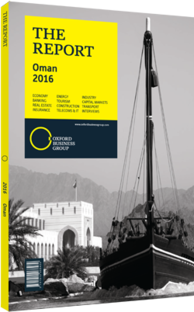Telecoms
The Company
Omani Qatari Telecommunications Company (Ooredoo), a leading provider of telecoms services in Oman, was founded in 2004 with its headquarters in Muscat. In February 2005 it was awarded a mobile licence in Oman for 15 years, and in June 2009 it was granted a 25-year fixed licence. Its core business activity is the provision of mobile and fixed telecoms networks and services to residential and corporate customers in Oman. The company’s major shareholder Qtel MENA Investcom (Qatar’s Ooredoo Group) owns 55% of Ooredoo Oman and has operational presence in 16 countries and 95m customers worldwide.
In March 2010 it was decided to make Ooredoo a public joint-stock company. It offered 40% of its shares in an initial public offering, and was listed on the Muscat Securities Market on November 2, 2010. Ooredoo completed rebranding from its previous name, Nawras, at the end of 2014. The company became the first genuinely global telecoms brand in Oman, as its market entry broke the monopoly of government-owned operator Omantel.
Performance
Total revenues grew 12% to OR226.4m ($586.1m) in 2014, up from OR202m ($523m) in 2013, driven by rises in mobile and fixed data revenue, and in international voice revenue. Net profit was OR37.9m ($98.1m), up from OR33.1m ($85.7m) in 2013. Revenues for the first half of 2015 grew by 13% to OR121.9m ($315.6m), up from OR108.3m ($280.4m) in 2014, driven by increases in mobile and fixed data revenue. Net profit for the first half of 2015 was OR22.2m ($57.5m), up from OR18.7m ($48.4m) in the same period of 2014.
The rise is driven by higher EBITDA partially offset by higher depreciation costs due to investment in network modernisation. The total number of customers grew by 11% to 2.75m at the end of the first half of 2015, compared to 2.47m in 2014. The fixed service base fell by 3% to 62,410 customers in the second quarter of 2015, down from 64,192 in same period of 2014. This is the result of the transition to a new home broadband technology that Ooredoo expects to bring improved services.
Ooredoo’s share price grew by 23% during the first half of 2015, reflecting sustained double-digit growth in revenues since the second quarter of 2014. The share price rose by 5%, despite a decline in the MSM 30 Index and other GCC markets. Ooredoo has maintained the dividend policy at 40-60% of EPS with minimum 38 baizas ($0.10) as dividend per share. In 2014, the company paid out 65% of its earnings to its shareholders in the form of dividends, with the current Ooredoo share price offering a 5% dividend yield to shareholders.
In November 2014 the Economic and Financial Committee of the Majlis Al Shura produced a series of recommendations, including an increase in the royalty fee paid by the country’s telecoms service providers (from the current 7% of net revenue to 12%), to boost government revenue for the fiscal budget in view of the substantial fall in oil revenues. There has so far been no news on whether the telecoms royalty fee rise will be implemented.
Several factors support telecoms sector growth in the sultanate, such as a rapidly growing population, the presence of different expatriate communities and a high level of disposable income. Oman’s mobile penetration levels have fallen over the past two years from an average of 180% during 2010-12 to 155% as of December 2014. The introduction of new smart devices is expected to stimulate data usage going forward and drive revenue growth.
Ooredoo has huge growth potential in fixed services as the company focuses on business-to-business corporate enterprise and begins the delivery of fibre-to-the-home services in partnership with Oman Broadband Company, a move that will continue to drive the addition of new customers.
You have reached the limit of premium articles you can view for free.
Choose from the options below to purchase print or digital editions of our Reports. You can also purchase a website subscription giving you unlimited access to all of our Reports online for 12 months.
If you have already purchased this Report or have a website subscription, please login to continue.

